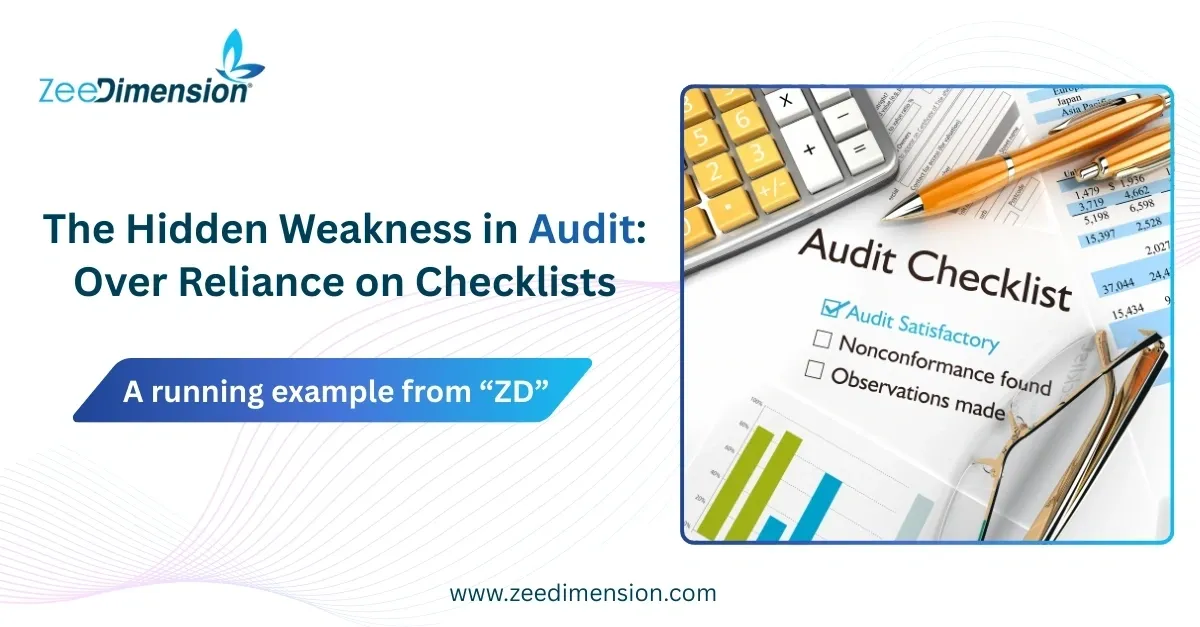
The Hidden Weakness in Audit: Over Reliance on Checklists
Audits often rely heavily on checklists. While these tools bring structure and consistency, they can also create a dangerous illusion of control. The story of “ZD” illustrates why ticking boxes is not the same as uncovering risk.
The Illusion of Control
ZD passed its annual audit with a 95% compliance score. The board felt confident. Yet beneath the surface, serious risks remained invisible—because they were never on the checklist.
Superficial Assurance
A checklist confirmed that ZD had a cybersecurity policy. On paper, compliance was clear. In reality, the policy was three years old, with no mention of cloud or AI threats—and weak passwords were everywhere.
Missing Emerging Risks
Another checklist confirmed that vendor contracts were signed and stored. True. But a key supplier was based in a politically unstable region—creating a major supply chain risk that went unnoticed.
Ignoring Red Flags
Financial approvals were documented in the system, satisfying the checklist. Yet late-night sign-offs by junior staff hinted at possible fraud. Because it wasn’t on the checklist, auditors skipped over it.
Audit Fatigue
Employees viewed the audit as a routine bureaucracy. The goal became producing documents to pass, not exposing real risks.
The Bigger Lesson
ZD’s “95% compliance” looked impressive but gave false assurance. Checklists alone cannot keep pace with today’s complex risk landscape—cybersecurity, ESG, and geopolitical threats require deeper scrutiny.
A Better Way Forward
True assurance comes from moving beyond static checklists. Organizations need:
-
Risk-Based Auditing: focus on high-impact areas.
-
Continuous Monitoring: use analytics and AI for real-time insights.
-
Dynamic Risk Registers: update risks as they evolve.
-
Professional Skepticism: ask tough questions beyond the checklist.
Closing Thought
Checklists provide comfort. Risk-based auditing provides assurance. The critical question is: Which one does your organization rely on?







